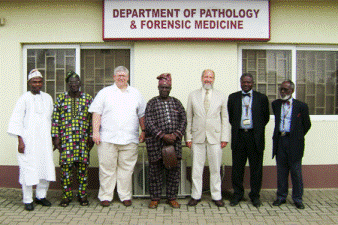Natural Resources, School of

Karl Reinhard Publications
Document Type
Article
Date of this Version
1-2018
Citation
Published in Journal of Archaeological Science: Reports 18 (2018) 51–58
doi:10.1016/j.jasrep.2018.01.001
Abstract
Archaeoparasitology provides a unique perspective on the health and habits of ancient cultures through the identification of parasite remains in archaeological materials. We identified eggs of the human whipworm, Trichuris trichiura, in coprolites recovered from Late Archaic (1926–1751 cal. BCE) and Ancestral Puebloan (1039–1163 cal. CE) sites in Chaco Canyon, New Mexico. Our findings represent the earliest record of T. trichiura in North America, the first record of the species from Chaco Canyon, and the first record of a macroparasite from a Late Archaic site (Atlatl Cave) on the Colorado Plateau. T. trichiura is common in the global archaeoparasitology record, but until now it was not known to have infected Ancestral Puebloans. Environmental barriers to transmission and lack of contact with infected Mesoamerican cultures have previously been used to explain the absence of this species from the Southwest. The new evidence of T. trichiura presented here raises questions about the cultural context which led to the arrival and persistence of this parasite in both a Late Archaic cave and an Ancestral Puebloan great house at Chaco Canyon. We propose that the moisture requirements of T. trichiura transmission may have been met through anthropogenic modification of the local environment, and that the presence of this species at Chaco Canyon suggests contact with infected Mesoamerican cultures. We also report the presence of the pinworm, Enterobius vermicularis, and unidentified larval nematodes in the Chaco Canyon archaeological record.
Included in
Archaeological Anthropology Commons, Ecology and Evolutionary Biology Commons, Environmental Public Health Commons, Other Public Health Commons, Parasitology Commons


Comments
Copyright © 2018 Elsevier Ltd. Used by permission